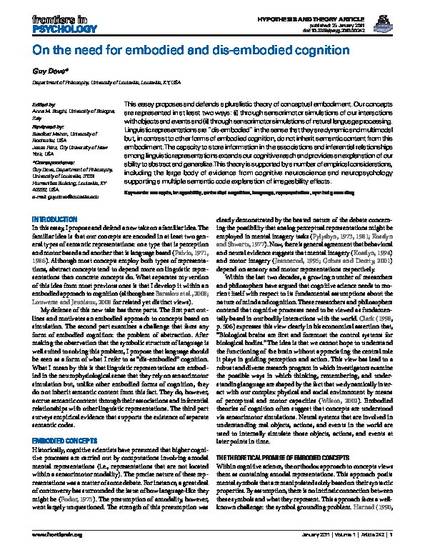
This essay proposes and defends a pluralistic theory of conceptual embodiment. Our concepts are represented in at least two ways: (i) through sensorimotor simulations of our interactions with objects and events and (ii) through sensorimotor simulations of natural language processing. Linguistic representations are “dis-embodied” in the sense that they are dynamic and multimodal but, in contrast to other forms of embodied cognition, do not inherit semantic content from this embodiment. The capacity to store information in the associations and inferential relationships among linguistic representations extends our cognitive reach and provides an explanation of our ability to abstract and generalize. This theory is supported by a number of empirical considerations, including the large body of evidence from cognitive neuroscience and neuropsychology supporting a multiple semantic code explanation of imageability effects.
Available at: http://works.bepress.com/guy-dove/27/

© 2011 Dove. This is an open-access article subject to an exclusive license agreement between the authors and Frontiers Media SA, which permits unrestricted use, distribution, and reproduction in any medium, provided the original authors and source are credited.
https://www.frontiersin.org/articles/10.3389/fpsyg.2010.00242/full